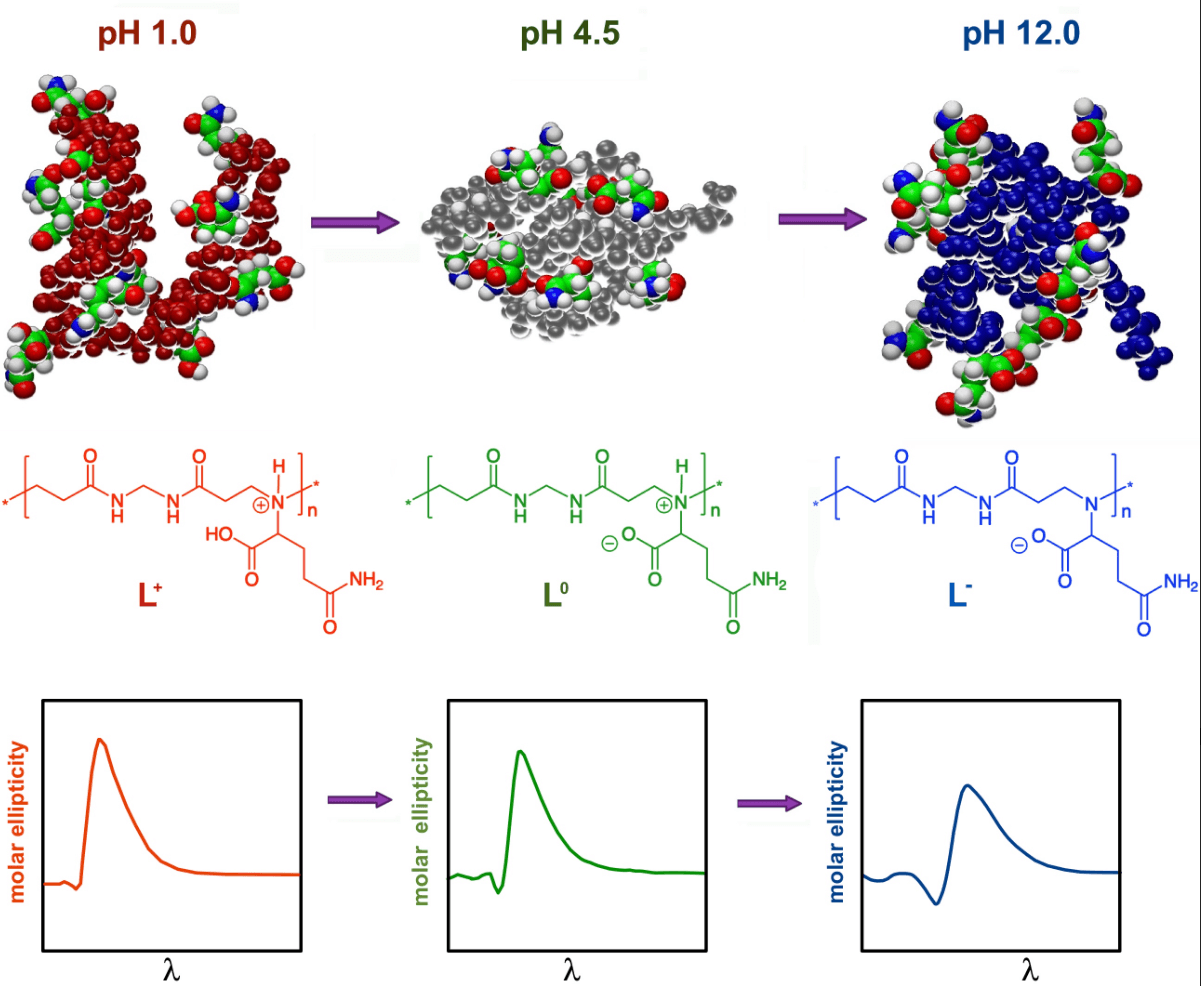Hydrogen Bonding in a l-Glutamine-Based Polyamidoamino Acid and its pH-Dependent Self-Ordered Coil Conformation
Abstract

This paper reports on synthesis, acid–base properties, and self-structuring in water of a chiral polyamidoamino acid, M-l-Gln, obtained from the polyaddition of N,N′-methylenebisacrylamide with l-glutamine, with the potential of establishing hydrogen bonds through its prim-amide pendants. The M-l-Gln showed pH-responsive circular dichroism spectra, revealing ordered conformations. Structuring was nearly insensitive to ionic strength but sensitive to denaturing agents. The NMR diffusion studies were consistent with a population of unimolecular nanoparticles thus excluding aggregation. The M-l-Gln had the highest molecular weight and hydrodynamic radius among all polyamidoamino acids described. Possibly, transient hydrogen bonds between l-glutamine molecules and M-l-Gln growing chains facilitated the polyaddition reaction. Theoretical modeling showed that M-l-Gln assumed pH-dependent self-ordered coil conformations with main chain transoid arrangements reminiscent of the protein hairpin motif owing to intramolecular dipole moments and hydrogen bonds. The latter were most numerous at the isoelectric point (pH 4.5), where they mainly involved even topologically distant main chain amide N–H and side chain amide C=O brought to proximity by structuring. Hydrogen bonds at pH 4.5 were also suggested by variable temperature NMR. The 2D NOESY experiments at pH 4.5 confirmed the formation of compact structures through the analysis of the main chain/side chain hydrogen contacts, in line with MD simulations. View Full-Text.